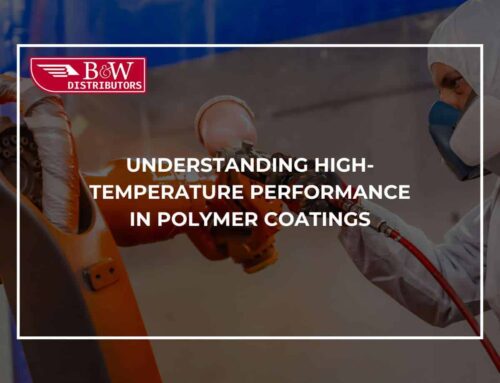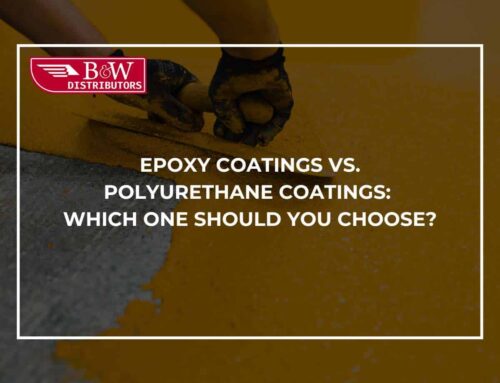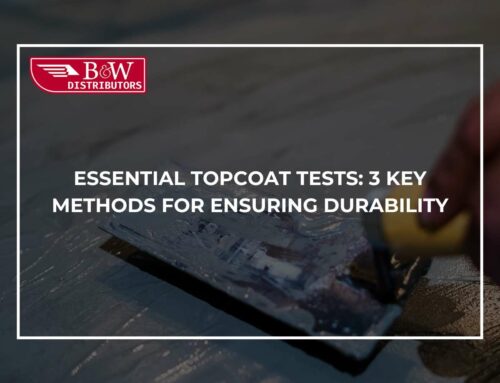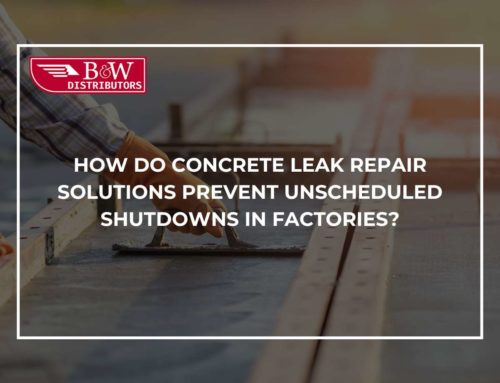Top 5 Essential Factors To Consider When Choosing Coatings For Long-Lasting Protection
Selecting The Best Coating System To Maximize Durability & Performance
When it comes to selecting the right coating system for your structure, various factors need to be considered to ensure long-lasting protection and effectiveness. Choosing the appropriate overcoat system is a crucial decision, as it can significantly impact the longevity and durability of the structure. At B&W Distributors, we specialize in providing high-quality industrial coatings. The viability of overcoating depends on several critical factors related to the existing paint system.
Here’s an in-depth look at the top five essential factors to consider when choosing coatings for long-lasting protection:
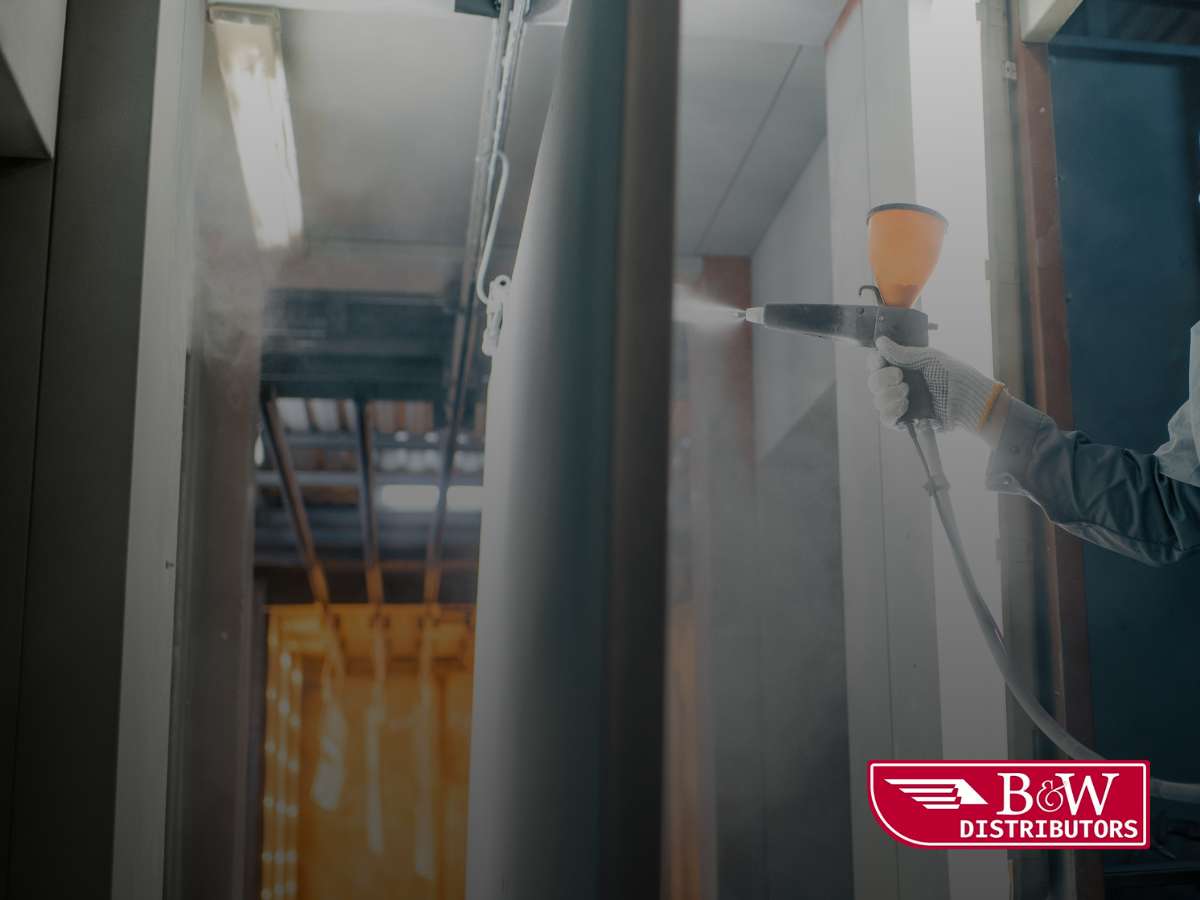
1. Assessing Substrate Corrosion For Optimal Coating Performance
One of the foremost considerations is the degree of corrosion present on the existing substrate. To determine if the existing paint system can be effectively overcoated, it is essential to assess the extent of corrosion. This evaluation typically involves a visual assessment, supplemented by photographic references to document the condition. Corrosion can manifest in various forms, including spot rusting, general rusting, or pinpoint rusting. Spot rusting affects isolated areas, while general rusting covers broader regions. Pinpoint rusting, on the other hand, is characterized by small, localized rust spots. Accurately identifying the type and extent of corrosion helps in determining the appropriate overcoat system.
2. Evaluating Coating Layers & Film Thickness For Maximum Durability
Before proceeding with an overcoat, it is crucial to determine the number of existing coats and their film thickness. This step ensures that the new coating system will adhere properly and provide the desired protection. Conduct tests at a minimum of three locations on the structure, and perform three tests at each location to ensure accuracy. Document the results in an organized manner, such as by drawing a diagram of the structure and marking the test locations with different colors. For large structures like bridges, dividing them into zones for testing is recommended. In each zone, perform tests at least three times and record the data meticulously.
For measuring dry film thickness (DFT), utilize tools such as a Tooke gauge, magnetic pull-off gauge, or magnetic flux film thickness gauge. A Tooke gauge or a visual examination of a paint chip cross-section can help estimate the number of coats. Accurate measurement of film thickness is crucial, as it affects the overall performance of the overcoat system.
3. Testing Coating Adhesion To Ensure Reliable Overcoating
Evaluating the adhesion of the existing coating system is another vital factor. Inspect the system for signs of delamination, cracking, and blistering. Take detailed notes on any defects observed. The adhesion of the existing coating to the substrate is critical, as poor adhesion can lead to problems with the new overcoat. If the existing coating exhibits extensive cracking or delamination, overcoating may not be advisable. For blisters, record their size and frequency. Conduct adhesion tests at the same locations where film thickness tests were performed, using methods such as the X-scribe and tape test or the knife adhesion test.
4. Managing Cohesive Stress For Enhanced Coating Longevity
Understanding the cohesive stress that the structure can endure is essential before applying a new overcoat. Adding additional layers of paint increases the cohesive stress on the existing paint system. It is crucial to assess whether the structure can handle this increased stress without adverse effects. The cohesive stress experienced by the structure varies depending on the type of coating used. Non-flexible conventional 2-component epoxies or aliphatic urethanes tend to develop higher cohesive stress upon curing compared to more flexible coatings like acrylic emulsions. Regardless of the overcoat system chosen, higher film thickness contributes to greater cohesive stress. Evaluating the structure’s ability to accommodate this stress ensures that it remains stable and durable over time.
5. Factoring In Geographic Exposure For Weather-Resistant Coatings
Geographic location and exposure conditions significantly influence the performance of the coating system. Structures located in colder Northern states, where freeze or snow conditions are prevalent, are subjected to additional stress. In such cases, selecting low cohesive stress overcoat systems becomes increasingly important to accommodate the harsh climate. Understanding the local environmental conditions helps in choosing a coating system that can withstand these conditions and provide long-lasting protection.
Key Insights For Choosing The Right Coating System
Choosing the right coating system involves a comprehensive evaluation of the substrate, existing coatings, and environmental conditions. It is crucial to understand these factors to ensure that the overcoat system provides effective protection and durability. If you require assistance with your overcoat project, our Arizona corrosion protection team at B&W Distributors is here to help. We specialize in corrosion protection and can guide you in determining whether an overcoat system is suitable for your structure, ensuring optimal results and long-lasting performance. Contact us today!

B&W DISTRIBUTORS INC.
Tel: (480) 924-8883
Email: info@bwdist.com
Web: https://www.bwdist.com/
ARIZONA
2702 N Ogden #107
Mesa, AZ 85215


